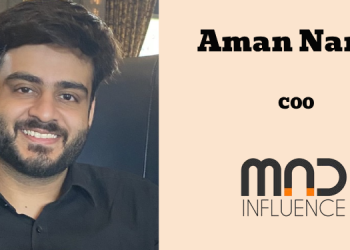Picture this: you’re scrolling through Instagram, and a post pops up—your favourite food blogger, sipping a cup of coffee, raving about a new flavour that “changed their mornings forever.” Without even realizing it, you’re curious. You click on the link and add the product to your cart, and suddenly, you are part of the success story that brands dream of. This is the magic of influencer marketing. In India, where consumers thrive on trust and relatability, influencer marketing has become the secret weapon for e-commerce brands aiming to stand out in a crowded marketplace. Gone are the days of hard-selling; today, a reel, a story, or a simple post from a trusted voice can do more than a full-blown ad campaign. Why? Because it feels personal. It is not just marketing; it’s a conversation.
Let us look at how Indian brands are redefining their strategies with influencer marketing, creating campaigns that drive sales and build communities of loyal customers.
Decoding the Influencer Economy
Influencer marketing thrives on the trust and relatability that social media personalities build with their audiences. The ecosystem is diverse, encompassing creators of various tiers based on their reach and engagement:
- Nano-Influencers (1,000–10,000 followers): Their audiences are niche but loyal, with high trust levels.
- Micro-Influencers (10,000–100,000 followers): Known for their expertise in specific domains, they often balance reach and relatability.
- Macro-Influencers (100,000–1 million followers): These influencers amplify campaigns through significant reach while retaining some personal connection with their audience.
- Mega-Influencers (1 million+ followers): These are celebrities with mass appeal, offering unmatched visibility.
How Indian brands are riding the influencer wave
Indian e-commerce brands are tapping into this influencer pool with precision, crafting campaigns that resonate deeply with their target audiences. Here’s how they’re doing it:
Nano-Influencers: trust in intimacy
Nano-influencers might not have millions of followers, but their recommendations carry immense credibility.
MyGlamm’s Beauty Campaigns: MyGlamm, a leading beauty brand, has excelled in collaborating with nano-influencers to create intimate, honest product reviews. Campaigns like #SuperMakeupForASuperYou empower individuals to express their inner superheroes through makeup, blending creativity with confidence.
Bewakoof’s Relatable Style Tips: Bewakoof, a quirky apparel brand, partners with nano-influencers to produce relatable content like casual OOTDs (Outfit of the Day) or fashion hauls. This targeted approach ensures that the brand’s youthful vibe reaches the right audience.
Micro-influencers: impact at scale
Micro-influencers bring together reach and relatability, making them a go-to choice for brands looking to grow without losing authenticity.
Nykaa’s #BeautyUnfiltered Campaign: By partnering with micro-influencers, Nykaa delivered personal, real-life skincare stories. The campaign achieved a 35% spike in website traffic and a 20% sales surge in the first month of launch.
Mamaearth’s #SwitchToSafe Campaign: Mamaearth’s collaboration with young mothers and skincare enthusiasts struck a chord. With over 500,000 impressions and a 15% boost in toxin-free product sales, it’s a testament to how micro-influencers can redefine trust.
Ajio’s Style Guides: Fashion retailer Ajio taps into the visual storytelling skills of micro-influencers. These influencers inspire followers to embrace the latest collections, from seasonal trends to must-have pieces.
Macro-influencers: visibility with depth
With a broad reach and considerable influence, macro-influencers amplify campaigns while maintaining a hint of relatability.
Amazon India’s Festive Splendour: During festive seasons, Amazon collaborates with macro-influencers and Bollywood celebrities to promote curated deals. These campaigns blend aspirational lifestyles with shopping ease, driving consumer engagement.
Flipkart’s Big Billion Days: Flipkart’s campaigns, powered by influencers like Shehnaaz Gill and Alia Bhatt, transform the online sale into a cultural moment. Their blend of humour, style, and relatability creates a ripple effect, compelling consumers to participate in the frenzy.
Mega-influencers: glamour and mass appeal
While expensive, mega-influencers bring unmatched visibility, often transforming brands into household names.
Badshah Masala’s Navratri Campaign: #BadshahSangNavrang was more than just a marketing initiative—it was a cultural celebration. By showcasing the festival’s vibrancy through food and colors, this campaign highlighted how mega-influencers can merge tradition with modern storytelling.
Success stories
One of the most compelling examples of influencer marketing success in India is Nykaa’s #BeautyUnfiltered campaign. By intentionally focusing on micro-influencers instead of larger names, the campaign emphasized real experiences over glossy endorsements. The result? Authenticity led to measurable outcomes, including a 35% increase in website traffic and a 20% jump in sales. This success story should inspire and motivate e-commerce professionals to explore the power of influencer marketing.
Similarly, Mamaearth’s strategic selection of wellness-oriented influencers for their #SwitchToSafe campaign demonstrated the power of data-driven influencer partnerships. Engagement rates tripled, proving that tailored influencer strategies can outperform generic approaches.
Why influencer marketing works for e-commerce
Influencer marketing bridges the gap between brands and consumers by providing:
- Authenticity: Consumers trust influencers for honest reviews, making them feel more confident about purchases.
- Hyper-Targeting: By using nano- and micro-influencers, brands can tap into niche audiences that perfectly match their product or service.
- High Engagement: Content like unboxings, tutorials, and real-life demonstrations foster interaction, driving consumer action.
What lies ahead?
The future of influencer marketing in India is set to grow exponentially as e-commerce continues to expand. With platforms like Instagram, YouTube, and Threads gaining traction, brands must constantly innovate. Emerging trends such as AI-driven influencer selection, live-stream shopping, and regional-language content will likely redefine how brands engage with audiences. As consumer behaviour evolves, the key for e-commerce brands will be to create meaningful connections. Whether through nano-influencers or mega-celebrities, the emphasis will always be on authenticity, relatability, and impact. This future is exciting and full of possibilities, and it’s up to us to seize them.
Conclusion
In the digital marketplace, where competition is fierce and consumer attention is fleeting, influencer marketing stands as a beacon of trust and engagement. For Indian e-commerce brands, it’s not just a strategy—it’s a necessity. By leveraging the right influencers and crafting campaigns that resonate, brands can unlock unprecedented growth, one authentic connection at a time. This urgency and importance of influencer marketing should be a call to action for all e-commerce professionals.
(View are personal)

















